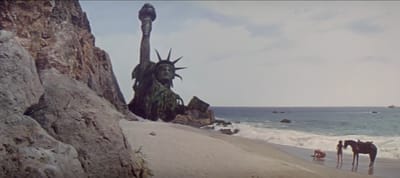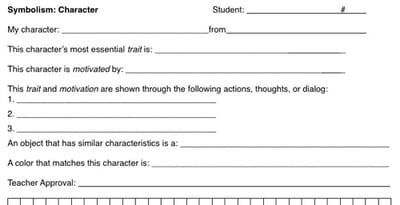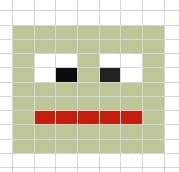Does symbolism seem too abstract to teach to younger students? With a well-constructed lesson and some relatable examples, students will get the hang of symbolic representation and then create their own symbols. We’ll finish this unit up with some pixelated art.
Rings
I begin by taking off my wedding band and discussing it with my students. I ask them what it stands for.
Quickly we get some outstanding examples:
- love
- marriage
- my wife
- forever (due to its circular shape)
- the ring finger connects to the vein of love
What if I lost my ring? Does that mean my marriage is gone? Has my love for Mrs. Byrd vanished? Of course not! The ring is not actually love. It’s a symbol.
But many students will know that a lost wedding ring could put me in some hot water. So a symbol has strong emotional connections to the idea it symbolizes. Symbols are important.
Now, does a ring always symbolize love?
My favorite counter-example is the Ring of Power from Lord of the Rings. The Ring symbolizes quite the opposite: uncontrollable power. Anyone who obtains the ring becomes consumed by its unquenchable thirst for more power.
Liberty
Next, I display an image of the Statue of Liberty. What does it stand for?
- liberty (duh)
- freedom
- America
- friendship (especially with France)
- hope
Then I ask if anyone has ever seen a movie or image with the statue destroyed or damaged. My 6th graders had tons of examples. We talked about how filmmakers use a damaged Statue of Liberty to show the destruction of liberty and freedom.
I use the classic image from Planet of the Apes to show how the Statue of Liberty symbolizes Earth and its destruction. (I’m always looking to expose students to classics!)
 />
/>
Students might also enjoy discussing the symbolism in flags or other national symbols. Much like my wedding ring, there is powerful symbolism in a flag. People get quite upset if they see their flag burning, for example, even though it’s just a symbol of a country – not their actual country. Symbols are powerful! (Hey, that’s a connection to a Universal Theme!)
Bringing It Back To Characters
Throughout the year, we read stories that include symbolism. Hatchet‘s Brian owns a hatchet. It symbolizes his hope to survive. Some students said it symbolized humanity versus nature. Nice!
Some quick symbolism from Pixar movies your students might be familiar with:
- Nemo’s “lucky fin” symbolizes the barracuda attack that destroyed his family.
- On the bottom of Woody’s boot, Andy’s scrawled name symbolizes their bond and love.
- Mr. Incredible’s room of newspaper clippings about him represents his longing for another time.
Computer Icons
Our last topic of discussion is the symbols that represent computer programs. We discuss Firefox’s image of a globe surrounded by a fox. Safari is a compass. Keynote is a podium. Garageband is a guitar.
Creation

I explain that we will create similar icons to represent a character. We identify a character’s main traits and their motivation. We think about the dialog, thoughts, and actions that show these traits and motivations.
Then students consider items that share these traits.
At first, students might try to simply draw the character or an object they hold. This is not enough. We want a very abstract symbol.
Consider a simple story such as The Three Little Pigs. The straw pig demonstrates laziness. What other objects show laziness? A straw house is too literal. We want something abstract. A recliner? A bed? A can of soda and some fast food? Now we’re talking!
After students have identified suitable items, I let them start creating their pixel art. We use a small grid. This keeps non-artists in a nice rigid framework, and challenges artists to be creative within the framework. Plus, all kids (and many adults) love pixel artwork because of its connections to video games.
Pixel Art

Naturally, our computers are too locked down to install any cool pixel art programs, so I repurposed Microsoft Excel. Students made square-sized cells and learned to change their background colors, in effect painting with a spreadsheet.
This could be done in the spreadsheet of your choice, including Excel, Numbers, and online with Google Docs.
Have fun and let me know how it goes!
